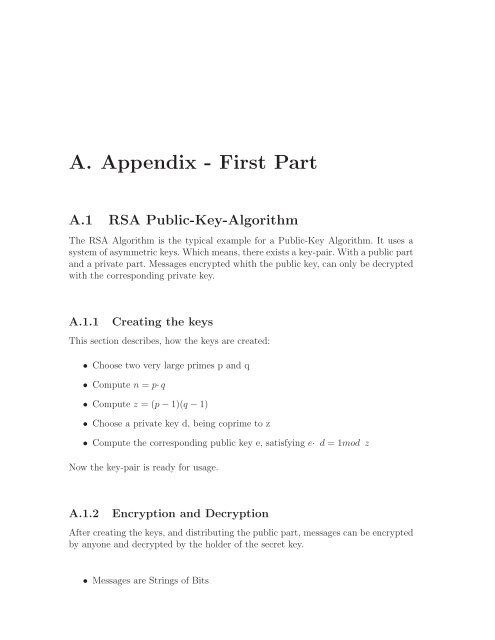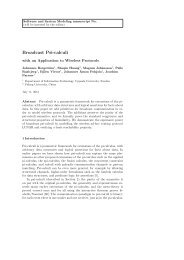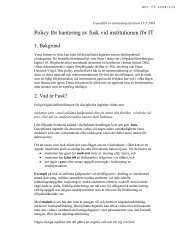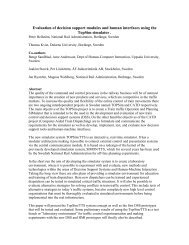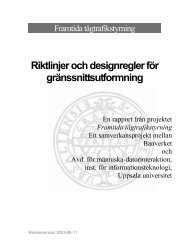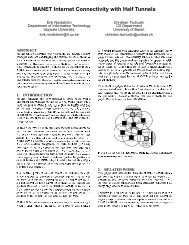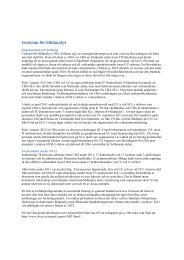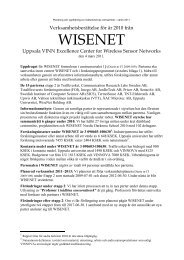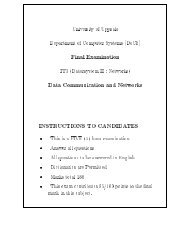Evaluation of Authentication Algorithms for Small Devices
Evaluation of Authentication Algorithms for Small Devices
Evaluation of Authentication Algorithms for Small Devices
Create successful ePaper yourself
Turn your PDF publications into a flip-book with our unique Google optimized e-Paper software.
A. Appendix - First Part<br />
A.1 RSA Public-Key-Algorithm<br />
The RSA Algorithm is the typical example <strong>for</strong> a Public-Key Algorithm. It uses a<br />
system <strong>of</strong> asymmetric keys. Which means, there exists a key-pair. With a public part<br />
and a private part. Messages encrypted whith the public key, can only be decrypted<br />
with the corresponding private key.<br />
A.1.1 Creating the keys<br />
This section describes, how the keys are created:<br />
• Choose two very large primes p and q<br />
• Compute n = p· q<br />
• Compute z = (p − 1)(q − 1)<br />
• Choose a private key d, being coprime to z<br />
• Compute the corresponding public key e, satisfying e· d = 1mod z<br />
Now the key-pair is ready <strong>for</strong> usage.<br />
A.1.2<br />
Encryption and Decryption<br />
After creating the keys, and distributing the public part, messages can be encrypted<br />
by anyone and decrypted by the holder <strong>of</strong> the secret key.<br />
• Messages are Strings <strong>of</strong> Bits


